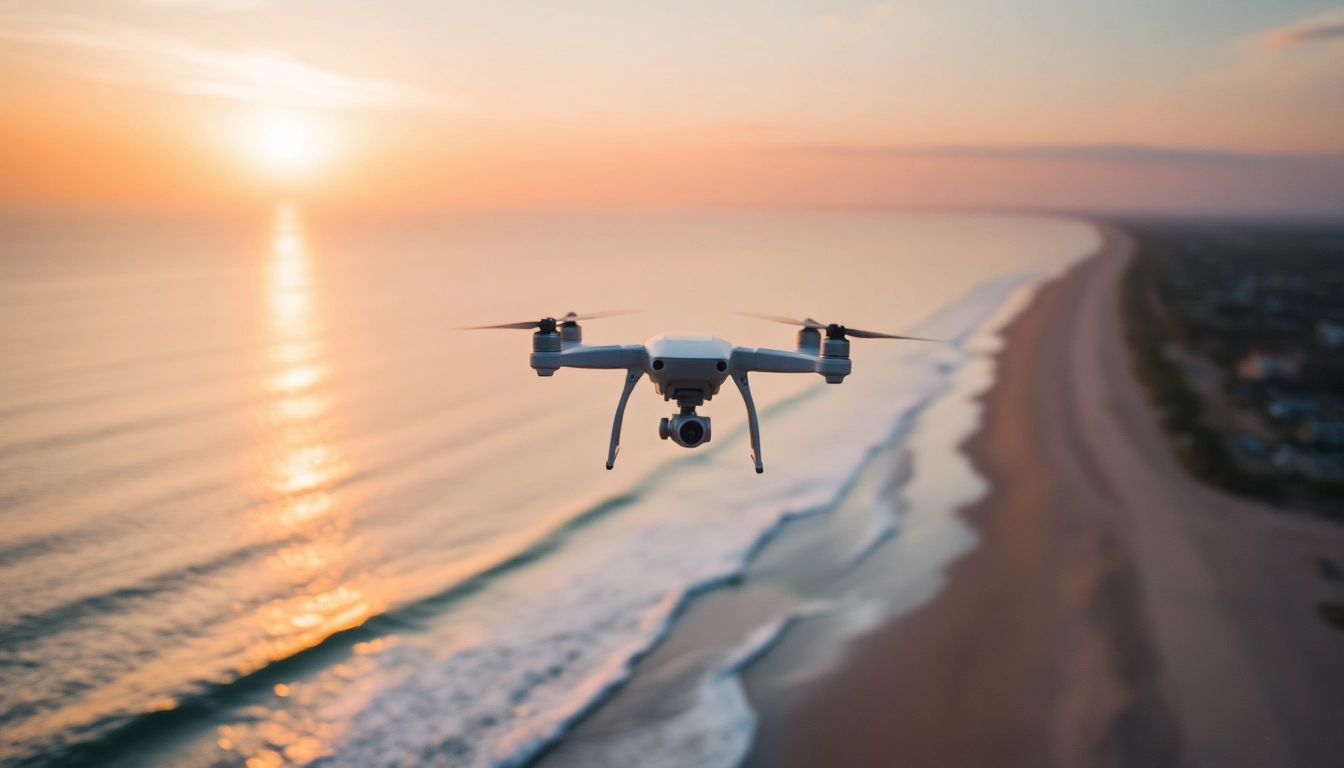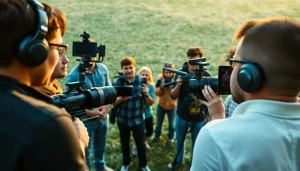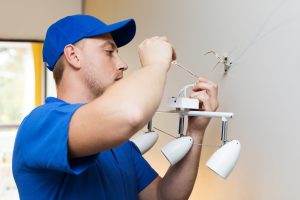Proven Drone Photography Tips for Capturing Stunning Aerial Images
Introduction to Drone Photography Tips
In recent years, drone photography has emerged as a captivating medium for capturing breathtaking aerial views that were once reserved for professional photographers equipped with helicopters or planes. The advent of consumer drones has democratized this art form, allowing enthusiasts to take stunning, high-quality photographs from the sky. Whether you are a budding photographer seeking new perspectives or a seasoned professional looking to enhance your portfolio, mastering drone photography can open up a world of creative possibilities. Before diving into the technical aspects, it’s fundamental to grasp some drone photography tips that can significantly elevate your aerial imagery.
Benefits of Aerial Photography
Aerial photography offers a unique way to view landscapes, architecture, and events from angles that ground-based photography simply cannot achieve. Here are a few key benefits:
- Unique Perspectives: Aerial photography captures breathtaking views that provide a fresh context to everyday scenes, enabling the photographer to tell a story in a way that traditional photography cannot.
- Enhanced Creativity: Drones empower photographers to experiment with angles, heights, and compositions that were previously difficult to achieve without significant resources.
- Wide Range of Applications: From real estate listings to weddings and outdoor adventures, drone photography can be employed in various sectors, offering valuable visual content.
- Documenting Change: Aerial images can document changes in landscapes over time, making it an invaluable tool for environmental monitoring and urban development studies.
Understanding Your Drone’s Capabilities
Before you take to the skies, it’s crucial to familiarize yourself with the specifications of your drone. Several key aspects to consider include:
- Camera Quality: The sensor and lens determine the clarity and details of your images. Look into drones with high-resolution cameras for better quality photos.
- Flight Time: Understanding your drone’s battery life will help you plan your flights efficiently. Most consumer drones offer flight times between 20 to 30 minutes.
- Range: The distance your drone can fly from the controller is essential, especially for capturing expansive landscapes.
- Stability and Wind Resistance: Certain drones are more adept at handling high winds and rough conditions, which can impact your aerial photography significantly.
Mastering the Basics of Drone Operation
Pre-Flight Checklist
Safety is paramount when operating a drone. A well-thought-out pre-flight checklist can prevent accidents and ensure a smooth experience:
- Check battery levels for both the drone and the controller.
- Inspect the drone for any physical damage, ensuring propellers are in good condition.
- Update the drone’s firmware before flying, if necessary.
- Familiarize yourself with the area’s regulations regarding drone flying.
Basic Piloting Skills
Building fundamental piloting skills is essential for capturing excellent imagery:
- Takeoff and Landing: Practice smooth takeoffs and landings to maintain control.
- Hovering: Develop the ability to hover in place, which is crucial for framing shots.
- Smooth Movements: Learn to execute gentle turns and movements to avoid jarring footage.
Understanding Flight Modes
Familiarizing yourself with your drone’s various flight modes can enhance your photography experience:
- GPS Mode: This mode stabilizes your drone and allows it to hold its position using GPS.
- Altitude Hold: Maintains a specific altitude, useful for shots that require stabilization.
- Sport Mode: Increases speed and maneuverability, but requires advanced piloting skills.
Advanced Techniques in Drone Photography
Framing Your Shots
Framing is an essential aspect of photography that should not be overlooked. Understanding how to frame your shots can dramatically improve the quality of your images:
- Rule of Thirds: Use the rule of thirds to create balanced and engaging compositions by positioning important elements along the grid lines.
- Leading Lines: Incorporate natural lines in the landscape to draw the viewer’s eye towards the subject of your photo.
- Unique Perspectives: Don’t hesitate to experiment with unusual angles, such as incredibly low or high perspectives.
Utilizing Natural Light
Lighting can make or break a photograph. Ideally, you should aim to shoot during the “golden hours,” which occur shortly after sunrise and before sunset:
- Softer Light: Natural light during these hours is softer and enhances colors, resulting in more vivid images.
- Shadows: Consider how light creates shadows, as these can add depth and dimension to your images.
- Clear Days: Flying on clear days with minimal cloud cover ensures maximum visibility.
Dynamic Movement in Aerial Shots
Incorporating movement into your aerial shots can create visually stunning content:
- Tracking Shots: Follow a moving subject to add dynamism to your photography.
- POV Shots: Capture images from the perspective of the drone, showcasing the journey.
- Orbiting: Use the orbit function available in many drones to circle your subject while capturing different angles.
Common Challenges in Drone Photography
Dealing with Wind and Weather
Weather conditions can significantly impact drone photography. Here are some tips to navigate tricky weather:
- Monitor local weather reports to ensure optimal flying conditions.
- Windy conditions can make controlling your drone challenging; opt for calm days for photography.
- If you must fly in windy conditions, learn to counteract wind to maintain stability.
Avoiding No-Fly Zones
Many regions restrict drone flights for safety and privacy reasons. Adhering to regulations is crucial:
- Before flying, check the local regulations regarding no-fly zones.
- Utilize apps that provide maps of no-fly zones for real-time updates.
- Seek permission if necessary, especially when flying in populated areas or near restricted airspace.
Battery Management Tips
Efficient battery management can make a significant difference in your flying experience:
- Ensure your batteries are fully charged before every flight.
- Keep a spare battery or two for extended shoots.
- Monitor battery levels regularly during flight to avoid unexpected landings.
Post-Processing Tips for Amazing Results
Editing Software Recommendations
Post-processing is an integral step in enhancing your aerial photographs:
- Adobe Lightroom: Excellent for basic adjustments and color corrections.
- Adobe Photoshop: Ideal for more detailed edits and manipulations.
- Affinity Photo: A cost-effective alternative with advanced features.
Color Correction Techniques
Improving color balance and saturation can enhance your aerial images significantly:
- Adjust white balance to restore the natural colors of the scene.
- Enhance saturation and vibrancy, but use sparingly to avoid unnatural hues.
- Utilize gradients for added depth and interest in skies or landscapes.
Enhancing Your Photos for Social Media
Social media requires tailored approaches to maximize viewer engagement:
- Crop images to fit various platform specifications while maintaining composition.
- Utilize highlight and shadow adjustments to create striking contrasts.
- Consider using filters that align with your overall aesthetic but avoid over-filtering.














Post Comment